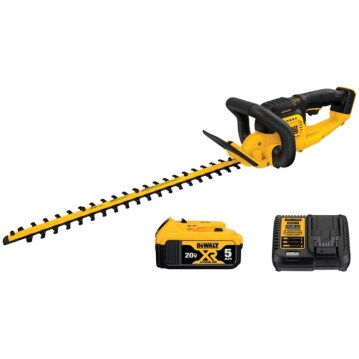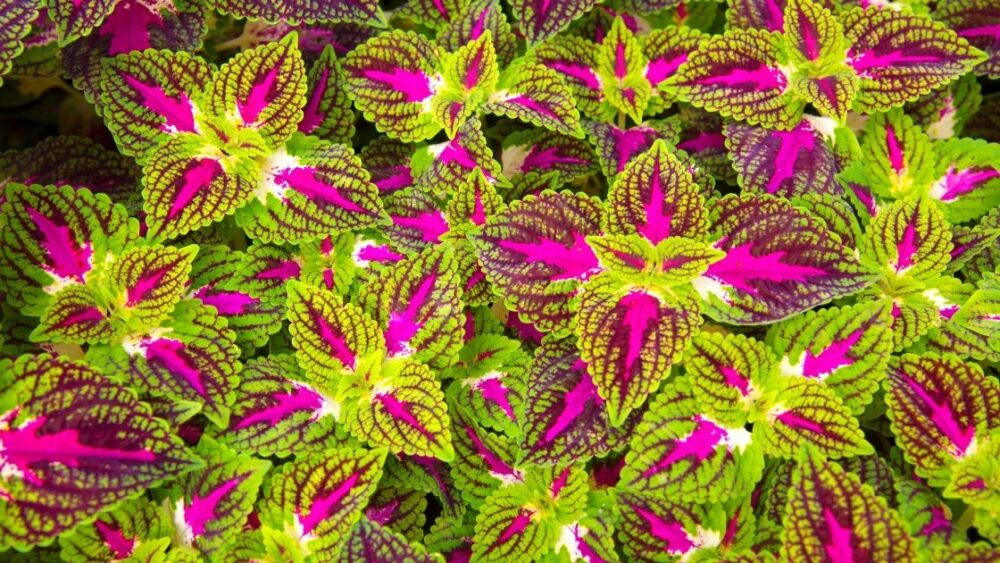
Letting nature take its course and allowing the needles to accumulate freely without cleaning them up can be a tempting idea – and usually, nothing bad will happen because of this. However, there are some aspects to consider – some pros, cons and possible problems created by very thick pine needle layers.
All coniferous trees shed needles – this phenomenon usually starts around late summer and continues for 3 to 5 months. The amount of shedding depends on the particular species, with a few rare species, called deciduous conifers shedding all of their needles. Older, bigger trees will shed more needles and there can be some annual variation, with some seasons resulting in much thicker needle layers.
What Are the Benefits of Letting Pine Needles Accumulate Under a Tree?
Letting pine needles accumulate doesn’t offer significant benefits neither for the tree, nor for other nearby plants. However, the needle layer doesn’t do much harm either, so in the end – letting the needles accumulate comes down mainly to personal preference and whether or not you like the look of the brown carpet created by the needles.
Browse our Affiliate Products
If the pine needles are cleaned up and collected, they can be used for a lot of things, which we’ll go over in a minute.
Are Pine Needles Good for the Tree?
The fallen tree needles create a natural mulch layer, which prevents water evaporation from the soil, preserving moisture. However, trees have very deep root systems which allow them access to water even in dry weather – because of this, the mulch layer will be of little help to them.
This mulch layer may create a better environment for the mycorrhizal fungi the tree roots partner up with, but this is hardly an important factor to consider for the average gardener.
Do Pine Needles Make Good Mulch?
Although the tree itself doesn’t benefit much from the natural mulch layer created by the fallen needles, they can be collected and used as mulch for other plants, including Azaleas, Blueberries, Raspberries and other moisture-loving plants.
If the needles are cut with scissors to make them shorter, they can even be used as mulch layers for small potted plants. Make sure to wash the needles well and leave them in the sun for a few days to avoid bringing pests and diseases indoors with them.
For more information on mulch, check out this article. Do I Have to Replace My Mulch Layer If It Has A Lot Of Weeds?
Do Pine Needles Kill Weeds?

Although pine needles (and other mulching materials) can be used to control weeds, this is not hugely effective, unless the mulch layer is very thick. Thin needle layers of less than half an inch won’t do anything to stop the germination of weed plants and may even promote it by creating a constant moist environment beneath.
Very thick layers of more than an inch will successfully suffocate weed sprouts before they have a chance to reach the surface, but it’s still better to simply perform a monthly weed check and uproot any invaders.
Uses for Collected Pine Needles
- Pine needles can be used for decorative purposes – many people love the nutty brown color of needle carpets. They bring a natural, ‘forest’ feel to your garden.
- Pine needles can be successfully used as winter mulch to protect plant roots from the frost – the numerous air spaces between the needles create a very good thermal insulation. However, wind easily penetrates those spaces – a plastic cover above the needle layer can make it much more effective.
- Dry pine needles (as well as cones) burn very well and can be used as fire starters – this of course can also be a disadvantage and large amounts of stored needles can pose a fire hazard.
- When buried in the soil, pine needles decompose and provide carbon and some nitrogen – they can also be used in composting. It’s common knowledge that pine needles acidify the soil – this may be just a myth, originating from the fact that coniferous trees naturally tend to germinate in more acidic soils.
Possible Problems Created by Pine Needle Layers
The only real danger of large accumulations of pine needles is the fire hazard they pose. This is why It is always a good idea to keep up maintenance especially if your home is surrounded by pine trees.
Otherwise, the rate at which pine trees shed needles will not create a layer thick enough to do any harm to nearby plants or the tree itself. However, lawn grass may be harmed by large deposits of needles.
For a list of tools a gardener should have, check out this is article. What Tools Should a Beginner Gardener Have?
Can Pine Needles Kill Lawn Areas?
A thick layer of pine needles can certainly suffocate lawn grass over time. The needles don’t contain anything toxic to the grass – instead, they simply provide a shade cover, which starves the young grass sprouts of sunlight, killing them before they can break the surface.
If you have a lawn area directly next to a pine tree, it’s a good practice to clean up the falling needles – they don’t look attractive when accumulating over lawns anyway.
Are Thick Pine Needle Layers Dangerous For Other Nearby Plants?
Although the needles can suffocate grass (and even this is rare), they pose little danger to larger plants – any plant with a height of more than around 5 inches will not be harmed by an accumulation of pine needles.
Drain Clogging, Fire Hazards and Other Issues
In certain situations, pine needles can block rain gutters and drains – this problem develops slowly, as the pine needles themselves create very coarse deposits, through which water can flow freely.
Over time however, the small gaps in-between the needles start getting clogged by dust and other particles, eventually causing the blockage. The problem usually takes a few seasons to develop and is relatively easy (although messy) to fix. Putting mesh screens over the drains and regularly getting rid of the pine needles is the only way to control this.
The fire hazard which pine needles pose can be significant (especially in dry, hot climates), but they aren’t unique in that regard – any dried plant material can also burn. Dry deciduous leaves, straw and wood chips pose an equal, or even more of a hazard. Partially composted needles don’t burn that easily at all, and are much safer to use as mulch.
The needles, as well as the bark and sap of some coniferous trees are toxic, which can pose a risk to livestock. It can be difficult to identify the exact tree species with confidence, because they look so much alike. However, the majority of pine trees are completely non-toxic and their needles can even be used to brew tea.
Final Thoughts
Accumulation of pine needles under coniferous trees is not harmful to your garden, but the needles can clog drains and in high numbers – suffocate grass lawns. Once collected, the dry needles have a lot of uses and make great mulch layers for all plants. If you choose not to use them for anything, they can at least be burned in a wood furnace, used as a fire starter or composted.











